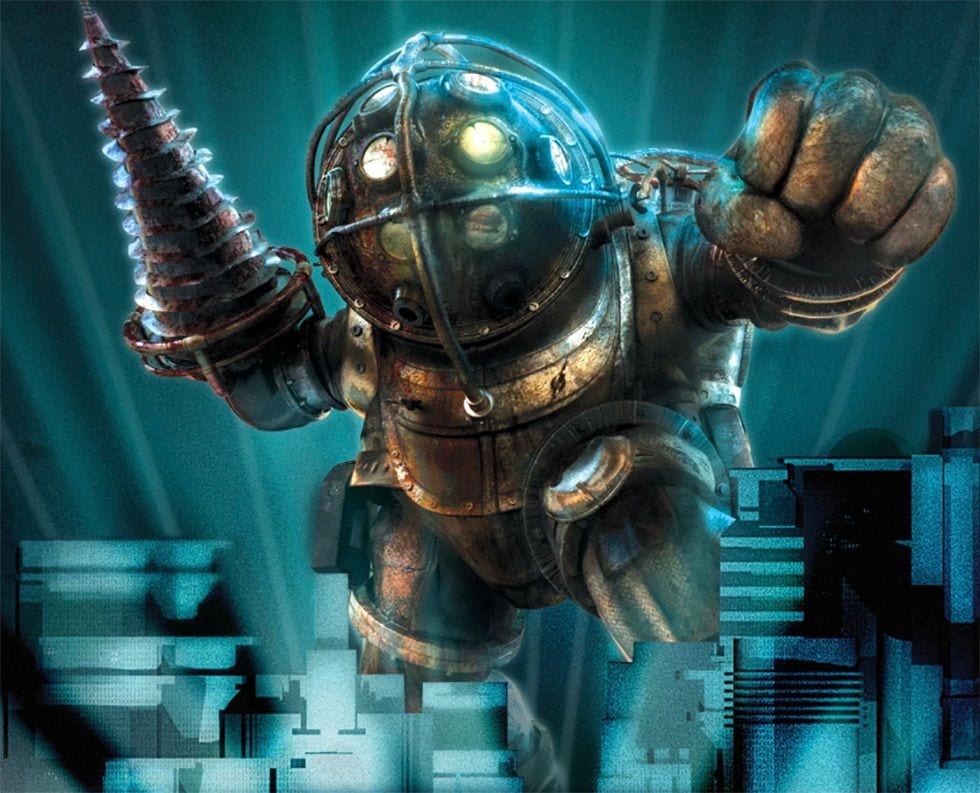In 2005 the Xbox360 was released, followed by the PS3 and Wii console in 2006. This was the beginning of a new era in video games with record-breaking sales and surging popularity for the young medium. Following on the heels of this success was a new generation of critics. The old question of whether or not games could be art was put to rest, but what followed was the issue of how one was supposed to talk about this developing medium at all.
In 2007 I volunteered as a critic on PopMatters for its new video game section. I initially parroted the skills I’d been taught as a liberal arts major: thesis, analyze some dialogue, talk about some art, and submit the article. My early work either overpraised games with weak gameplay or complained about weak plots but otherwise great design. After a few months it became obvious I was not really doing the medium justice. So I decided to look around and see how other critics did it.
I can still remember typing ‘Video Game Criticism’ into the Google Search field and being baffled by the random results. This was the era of Blogger and Wordpad. One could find the opinions of game designers and academics posting alongside fans and hobbyists. There were people analyzing games through the lens of theater, architecture, gender, technology, race, or anything else you could imagine. How it worked was you found someone you liked and just added that blog to your rotation. You’d get a notice on your RSS Feed when something new was posted or, more commonly, they posted on a set day of the week. Comment sections were still worth reading in those days and this slowly expanded to Facebook and Twitter as a way to discover interesting writers.
It’s hard to capture what drove all these people to write. There was an energy to the conversation, a vague sixth sense that something transformative was happening, and I think what drove so many people was just the human desire to be a part of it. This was a critical movement, which happened almost entirely online. There’s no single writer or game which specifically caused the landscape of video game criticism to change. Many of the forums and videos where game criticism was being hashed out are no longer even online. For that reason, I’m going to limit listing games or writers from that era, with some exceptions. This is a history of a critical movement more than any specific game or writer.
It’s easiest to articulate the evolution of game criticism by beginning at my own weakness: the liberal arts approach. A video game is not a static object. The narrative is non-linear and rarely do players share the same experience. Someone might only care about the plot and keep the challenge low, others might skip the cutscenes to focus on gameplay. My earliest work still makes me cringe because of its focus on plot and aesthetics but that was where the innovation was happening in those days. Huge budgets, professional writers, and revolutionary graphics were expanding not just the kinds of stories in games, but the nuance and methods of storytelling. For a brief period it was just novel to talk about games in a serious, high-art manner. The gaping flaw of this approach is pretty obvious: what about the actual gameplay?
The backlash to the liberal arts game critic was a call for purity. Design-centric writers bashed the tone-deaf approach of praising just the plot of a game while offering up detailed explanations of mechanics. These critics declared that the plot was merely a setpiece, the art a stylized signifier. This return to form was both important and yet carried its own problem. Just as the liberal arts approach missed out on a huge portion of what made a game work, ignoring the graphics and cinematic story lost the essence of what was engaging people with this new era of gaming.
The solution was to just talk about both. Back then there was no blueprint for discussing game mechanics and plot in the same article. Some writers would wall these discussions off into sections where each was addressed in isolation. Writers would review things like graphics, gameplay, and story by assigning their own individual score. This approach fell short for many critics because these components become more than the sum because they are experienced simultaneously when playing. The solution still used today is built out of two different approaches. The first is Clint Hocking’s ludonarrative dissonance. The second is Kieron Gillen’s New Games Journalism.
Ludonarrative dissonance describes when the gameplay and narrative don’t really make sense together. The classic example comes from the Uncharted series, where the player character is a lovable rogue who, for gameplay reasons, must shoot hundreds of people. Clint Hocking coined the term in a blog post in 2007 and it has been cropping up in game criticism ever since. I think its regularity in the lexicon comes from the fact that it neatly captures the narrative vs gameplay debate into a simple litmus test: how much do the two even make sense together?
Ludonarrative dissonance accomplishes more in game criticism than one might expect. The narrative components of Super Mario Galaxy (Nintendo, 2007) aren’t so much the plot as it is the art, sound, and music. All of these merge wonderfully with the game design to make a platforming game about being buoyant and having fun. The Ayn Rand-inspired horror of Bioshock (2K Games, 2007) is a somewhat incongruous fit with its ‘Little Sister’ mechanic wherein you can either murder a small child for money or spare her life for less money, but the shooter design matches the libertarian themes well enough. Within a few years of this principle being introduced, the motif was so embedded that games started coming out which purposefully tried to be as dissonant as possible. Ludonarrative dissonance evolved from a critical standard into an aesthetic subversion.
Yet the video game essay was still falling short in another area: how do you talk about the actual playing of the game? The very concept of play is difficult to define in any meaningful sense. The best book ever written on the subject was Johan Huizanga’s Homo Ludens and his ideas have become so disseminated into video game discussion that most people don’t realize it when they are rehashing them. Huizinga coined the term “magic circle” and the notion that play is a kind of invisible field. If you leave the circle of play, then you take away the energy and are describing something inert. There is an essence of “being there” that must be communicated in order to really discuss a video game.
The solution to describing play took a long time to form, but it starts with Kieron Gillen’s New Games Journalism manifesto. Written in 2004, Gillen was discussing the failure of game criticism to address multiplayer titles. It was inspired by the article ‘Bow Nigger’, by AlwaysBlack where the author vividly describes beating a racist player in a complex online duel. The satisfaction of a good play, the context of beating a toxic player, and outlining the game’s systems all required a close focus on the individual experience. Much like Hocking’s ludonarrative dissonance, the term ‘new games journalism’ neatly captured the essence of trying to recreate the sense of play by reporting events as they unfolded.
It’s challenging to develop layer upon layer of believable stakes to draw the reader into what would otherwise be a mundane story of pressing buttons. Some writers ended up talking about themselves more than the actual video game. Many games aren’t really even suited for New Games Journalism because they’re not very interesting when described from the player’s perspective. For the first couple of years, with several exceptions, New Games Journalism was a bit of a mess.
Where it really took off was when Youtube gameplay videos became popular. Once you could see the game being played as the person narrated, the approach made a lot more sense. Entire careers like Game Grumps or PewDiePie have been launched around this style. In many ways the rise of the Youtube star is where the blogging era of game criticism ends. The ability to show a video clip of a game with commentary is just plainly superior to trying to express the experience in words.
It’s easy to look back on those early years and just frame game criticism as an arc of positive growth. The reality is that ideas developed in stops, starts, and reverses as games like Mass Effect (Bioware, 2007) or Dark Souls (FromSoftware, 2011) progressed the conversation while other titles regressed the discussion. Difficulty in games is back in debate today, but instead of Sekiro: Shadows Die Twice (FromSoft, 2019), back in 2007 it was Ninja Gaiden Black. There were the usual debates on narrative, gameplay vs narrative, or the infamous “Games Are Not Stories” angle. All of these subjects come back up depending on what’s topping the charts rather than any sort of linear development.
The subculture of game criticism was also not without its dark side. Writers who openly identified their race and gender while advocating for better representation in video games were regularly subjected to online attacks. In the late 2000’s people were just beginning to understand the scale of internet abuse happening online. Yet their work was instrumental in bringing about real changes in representation. Ten years ago the majority of games starred white male protagonists, today you can find diversity in the roster options of Overwatch (Blizzard, 2016) or Fortnite (Epic Games, 2017), two of the top selling games for their respective releases. Female leads are also more common with titles such as Horizon Zero Dawn (Guerilla Games, 2017) or the Tomb Raider reboots (Square-Enix, 2013).
Looking at game criticism today shows the topic to be as robust as ever. Critics alternate between approaches of personal experience to game design to narrative with a casual ease that did not exist ten years ago. That approach was pioneered by hundreds of writers across the internet as the Xbox360, PS3, and Wii drove video game popularity to new heights. Something big was happening back in those days and everyone wanted to be a part of it. Even if that meant just writing about the latest game.
- Future Gaming by Paolo Ruffino (book review) - PopMatters
- Video Game Criticism
- 'Game Art': Letting the Developers Speak - PopMatters
- Why You Should Give 'Dragon Age II' a Second Chance - PopMatters
- Unit Operations: An Approach to Video Game Criticism - PopMatters
- The New YouTube Game Criticism: An Interview with "moviebob ...
- On Design-Centric Game Criticism - PopMatters
- The New Puritanism, or, Some Troubling Tendencies in Video Game ...
- Does Video Game Criticism Need a Lester Bangs? - PopMatters
- Does Video Game Criticism Need a Pauline Kael? - PopMatters


